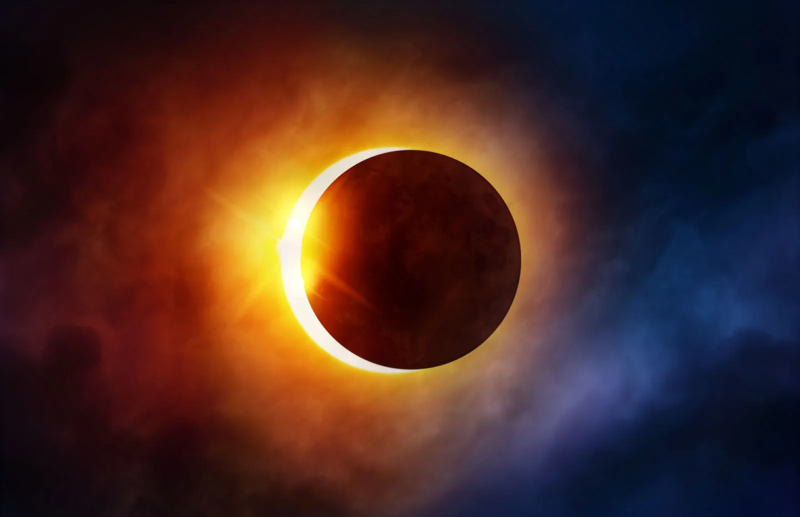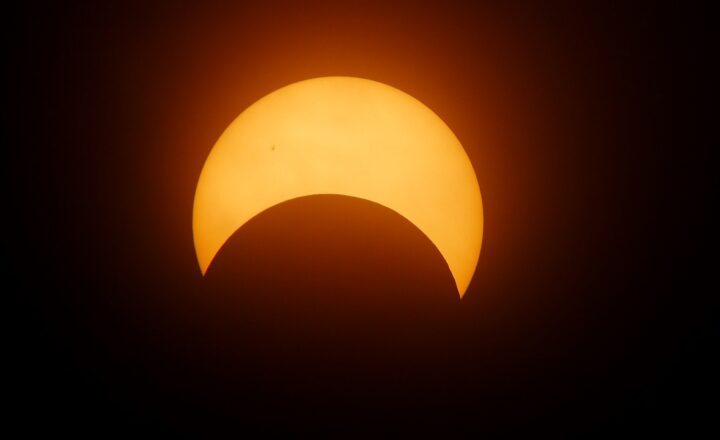
A solar eclipse is a fascinating celestial event that captures the attention of sky watchers and astronomy enthusiasts around the world. This rare occurrence happens when the Moon passes between the Earth and the Sun, temporarily blocking the Sun’s light. In this article, we’ll explore the different types of solar eclipses, the science behind them, historical significance, and how to safely observe these incredible events.
1. What Causes a Solar Eclipse?
A solar eclipse occurs when the Moon aligns directly between the Earth and the Sun, casting a shadow on the Earth’s surface. This alignment can only happen during a new moon phase, as it is the only time the Moon is positioned directly between the Earth and the Sun. However, due to the Moon’s tilted orbit, solar eclipses are relatively rare and don’t occur every new moon.
2. Types of Solar Eclipses
There are three main types of solar eclipses, each with unique characteristics:
a. Total Solar Eclipse
In a total solar eclipse, the Moon completely covers the Sun, briefly turning day into night for those within the path of totality. Observers can witness the Sun’s outer atmosphere, known as the corona, which creates a beautiful halo effect around the darkened Sun. Total solar eclipses are rare, with any given location experiencing one roughly every 375 years.
b. Partial Solar Eclipse
During a partial solar eclipse, only a portion of the Sun is obscured by the Moon. This type of eclipse is more common than a total eclipse and can be seen from a wider area. However, because the Sun isn’t fully covered, it’s crucial to use proper eye protection throughout the entire event.
c. Annular Solar Eclipse
An annular solar eclipse occurs when the Moon is near its farthest point from Earth in its elliptical orbit. As a result, the Moon appears smaller and doesn’t completely cover the Sun, leaving a “ring of fire” or bright ring of sunlight around the Moon’s edges. Annular eclipses are also known as “ring” eclipses and are particularly striking to witness.
3. Historical Significance of Solar Eclipses
Solar eclipses have fascinated and sometimes frightened people throughout history. In ancient times, eclipses were often seen as omens or supernatural events. For instance, ancient Chinese and Babylonian cultures saw eclipses as signs of displeasure from the gods, while the Greek philosopher Anaxagoras was one of the first to correctly explain the phenomenon scientifically.
One of the most famous accounts of a solar eclipse in history occurred in 585 B.C., when an eclipse reputedly ended a battle between the Lydians and the Medes. Eclipses have also been valuable for scientific discovery. During a total solar eclipse in 1919, Sir Arthur Eddington confirmed Albert Einstein’s theory of general relativity by observing how the Sun’s gravity bent the light from distant stars.
4. How to Safely View a Solar Eclipse
Watching a solar eclipse can be an unforgettable experience, but it’s crucial to protect your eyes from harmful solar radiation. Here are some tips for safely viewing a solar eclipse:
a. Use Eclipse Glasses
Never look directly at the Sun without proper eye protection. Eclipse glasses are specially designed to block out harmful rays and allow you to safely observe an eclipse. Regular sunglasses do not provide adequate protection.
b. Use a Pinhole Projector
If you don’t have eclipse glasses, a pinhole projector is an easy way to view the eclipse indirectly. Simply create a small hole in a piece of cardboard, hold it up to the Sun, and observe the projection of the Sun on the ground or another surface.
c. Avoid Direct Viewing During a Partial or Annular Eclipse
Only during a total solar eclipse, and specifically during the few brief moments of totality, is it safe to look at the Sun with the naked eye. For partial and annular eclipses, always use eye protection.
5. Upcoming Solar Eclipses to Watch For
Solar eclipses happen somewhere on Earth a few times a year, but they are visible from specific locations. Here are some notable upcoming solar eclipses:
- October 14, 2023: An annular solar eclipse visible from parts of the United States, Central America, and South America.
- April 8, 2024: A total solar eclipse visible from parts of the United States, Canada, and Mexico. This will be a prime opportunity for North American viewers to witness a total eclipse.
Make sure to check the path of each eclipse to see where it will be visible and plan ahead if you’d like to view it in person.
Conclusion
Solar eclipses are awe-inspiring events that allow us to experience the wonders of the cosmos firsthand. Whether you’re watching a total, partial, or annular eclipse, understanding the science and safety tips behind these phenomena can enhance your experience. By preparing ahead of time and following safe viewing practices, you can make the most of your next solar eclipse viewing.








